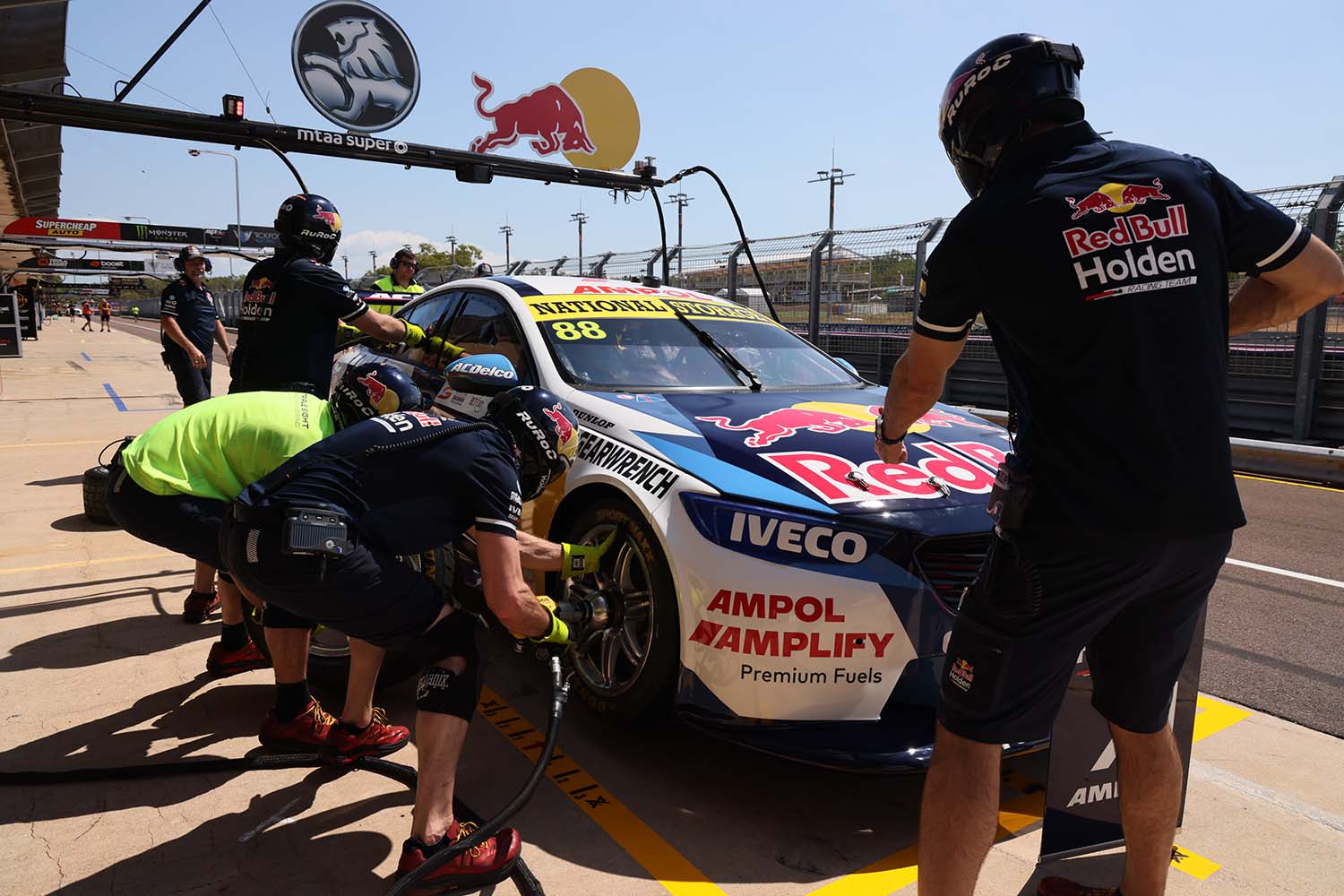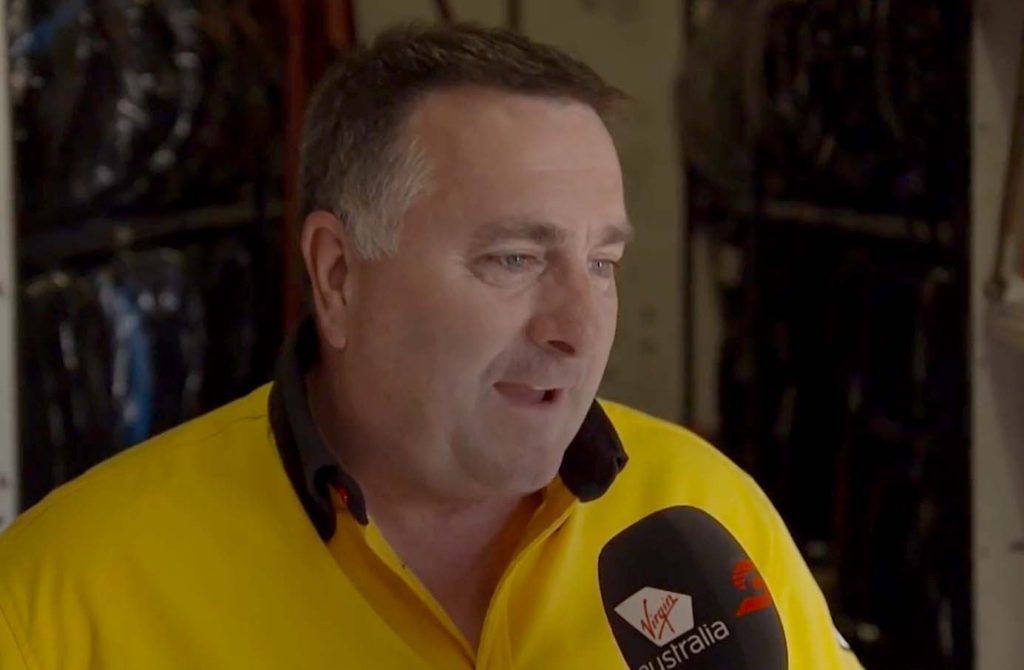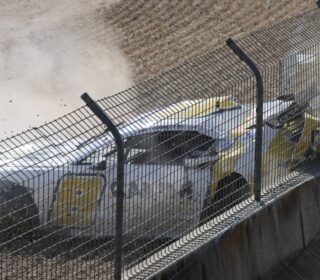INSIGHT: DUNLOP DELIVERING ON TYRE TESTS

TYRES have been the talk of the town since Supercars returned to racing. We got Dunlop’s Operations chief Kevin Fitzsimons, who has 30 years of unbroken Supercar event attendance, on the line to talk about the round, black things that are so critical to the sport.
WORDS: Richard Craill IMAGES: Mark Horsburgh / Supercars
BEING a control tyre supplier to a racing category can be a tough deal.
Sure, there’s a monopoly on the market and the business case stacks up, but then when things go wrong you’re public enemy number one.
And when things go well – well, you don’t get talked about at all.
Tyres have been even more in the forefront of the Supercars conversation since the series returned to racing in June this year, the series’ decision to implement the return of mixed-tyre compounds creating a real ‘love it or hate it’ scenario both within the paddock and in the fanbase.
Through it all, Dunlop’s Australian Motorsport operations chief Kevin Fitzsimons has calmly navigated the choppy waters, their efforts – at least on the outside – flipping between sorting any supply issues, border crossings and staffing requirements on the road and still supplying the only contact patch the field has to the circuit week in, week out.

Fitzsimons and his small team were, like Victorian-based Supercars teams, caught up in the mad scramble to the border in June as Melbourne’s second wave approached.
It necessitated throwing as many tyres as possible into the Dunlop truck, Kevin hitting the road with two full-timers to keep the show, quite literally, on the road.
In a wide-ranging chat, the popular figure in the Supercars paddock told the On the Grid podcast that the process in determining tyre allocations for events since the border hop has relied on a strong working relationship with Supercars’ technical chiefs.
“The situation that we’re in at the moment is that I gave Adrian Burgess (Supercars technical boss) a list of what we had. At the start of this year we were heading to the new format of new practice tyres everywhere we went: Every round was going to be 32-40 tyres per car,” Fitzsimons explained.
“So, when they came back after the Covid shutdown we dropped back to 28, so we knew we had lots and lots of stock.
“I was only waiting on Bathurst tyres (on order from overseas) so I was able to cancel Gold Coast, the Newcastle tyres, as far as production goes, so the availability was around the 9500 tyre mark.
“That’s how we were able to do the five race meetings with the three sets of hards and throw the softs in from there. It gave them options.
“We don’t get involved in formats as much, it’s ‘can you supply?’, and we do.”
With the reduction in the tyre allocation and a reduction in the total number of events on the calendar this year, it turns out stock is not likely to be a problem.
“Our production is a long way, six months in advance, so changing close to race meetings as far as reducing tyres is really easy, increasing is difficult. At the moment we’ve got massive amounts of stock, so we’re be happy to be churning them out of the door.”
A key element of Supercars return to racing plan was to mix up the formats and the competition, in an effort to not only promote better racing but give more people a chance to run at the front of the field.
With the cars’ technical specifications locked and the amount of aero unlikely to change in the immediate future, tyres proved to be the easiest, most accessible and affordable way to change-up the technical package.
While the mixed tyre rules have proved controversial, the rule changes went further than just forcing teams to choose between hard or soft in a bid to spice up the action.
It’s another example of Dunlop and the sport’s technical department working closely to affect change.
“Supercars introduced after Sydney Motorsport Park 2 was no longer turning the tyre on the rim,” Fitzsimons explained of a key change.
“Because of the amount of camber they run, it does wear the inside into the tyre significantly more than the outside, so you’re able to turn the tyre on the rim and get even more life out of it. Well, they knocked that on the head; they wanted the degradation, they wanted the tyre to be able to drop off and have the result that we have of guys charging through the field.”
The varied on-track conditions made for different on-track products in a back-to-back comparison between the second Sydney event and Darwin’s first last weekend.
“We know Sydney is a very high deg track and we know Townsville will be to a certain extent as well. Darwin, because the surface is so good, it wasn’t as obvious.
“It’s one of those things where you have to sit back and remember the show. We’re on track and nobody else is on track at the moment.
“Because of the nature of the cars, they are so hard to pass, the deg helps that. It introduces another factor that can open some opportunities (for racing) up.”
TOMORROW – Kevin talks about the strengths of the current Dunlop Control Tyre, what went wrong with Phillip Island 2017 and plans for Generation III – and the prospect of a ‘Qualifying’ tyre for Bathurst’s shootout..







